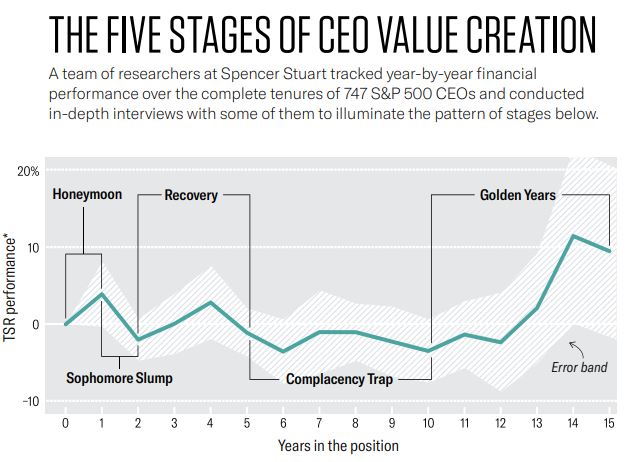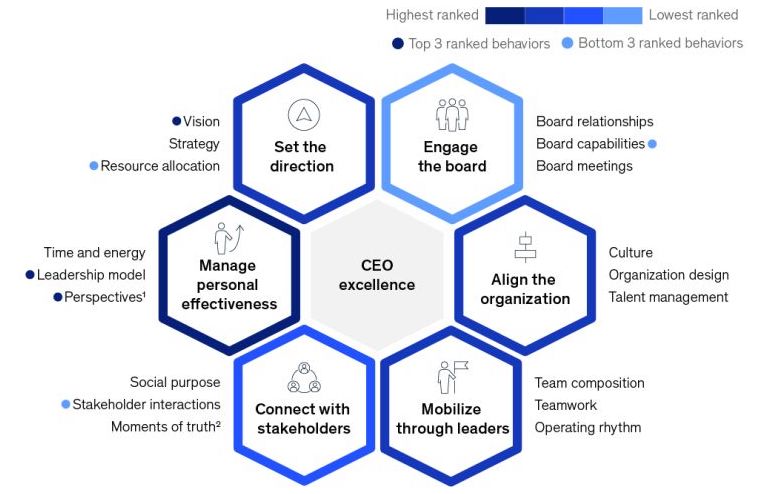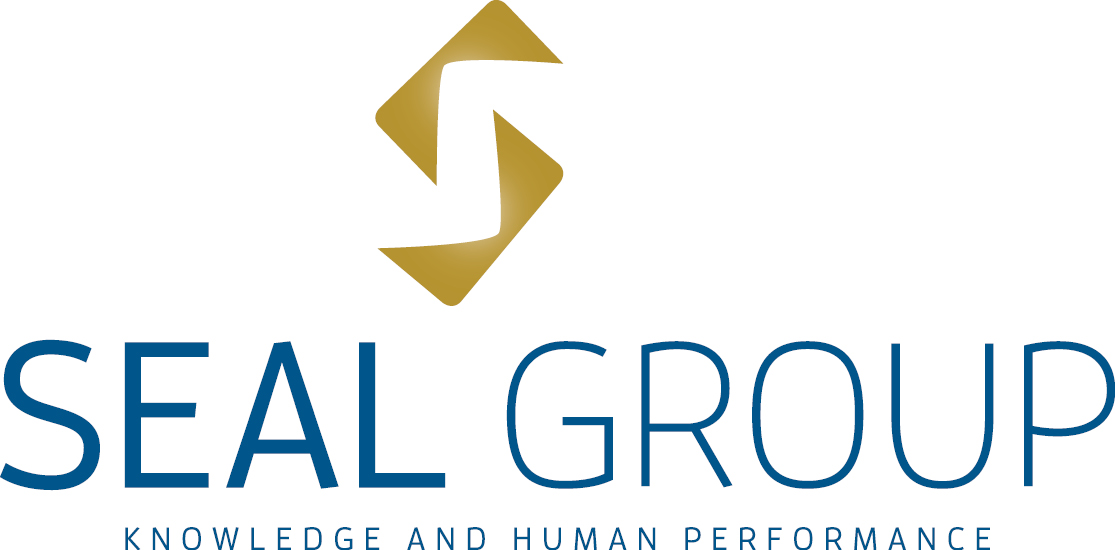CEO: The Secret to Success Lies in Leadership!
In the business world, the figure of the CEO is crucial. If a company maintains top performance for a decade or more, its value to stakeholders is unparalleled. This phenomenon, known as “the power curve,” highlights the importance of the role played by the CEO in creating value, where their leadership dynamics are fundamental.

image: alphajwc
Recent studies emphasize the “CEO effect,” indicating that the actions and decisions made by these leaders have an increasingly significant impact on overall company performance. Over the past five decades, the CEO’s influence on corporate performance has doubled, further underscoring the importance of this role throughout the organization’s dynamics. Strategic thinking, rather than just operational thinking, is essential in a corporate world where the ability to act (and react) quickly and with focus is paramount.
One of the major challenges faced by many CEOs, top leaders, is their “imprisonment” in micromanagement and their inability to balance solving complex daily problems with strategic decisions aligned with the organization’s purpose and values. I would even say that, in many decisions, common sense alone would be sufficient, without the need for complex knowledge models or highly advanced tools.
Assuming the role of CEO is not an easy task. The challenges are vast and complex. About two out of every five CEOs face difficulties in the first 18 months of their tenure, while one in three is asked to leave after three years. These statistics, along with the realization that 60% of CEOs feel they are “winging it,” reflect the inherent complexity of the position, which became even more uncertain and “tense” after the Covid-19 pandemic.
The Five Stages of CEO Value Creation
Harvard Business Review, in collaboration with Spencer Stuart, conducted an interesting study on the various stages in the performance and life of a CEO, analyzing all the mandates of 747 CEOs from the S&P 500 index from 2004 to 2017, with the following conclusions about the five stages:
Year 1: The honeymoon period. Most CEOs achieve above-average performance in the first year. They enter the job with fully charged batteries, ready to take the lead; enthusiasm for change drives up stock prices and unites investors, the board, and the organization. Excellent financial results in the first year may have set an unrealistic standard. Year 2: The second-year crisis. After the honeymoon phase, the pendulum typically swings in the opposite direction, often driven more by unmet expectations than by real significant problems. Years 3 to 5: Recovery. If they survive the second-year crisis, most CEOs will enter a period of favorable winds. Their actions in the first two years begin to bear fruit, and at this stage, they are working for the future; their brand is already throughout the organization. Years 6 to 10: The complacency trap. The recovery period is often followed by a period of prolonged stagnation and mediocre results. Performance may not be entirely negative (and in some cases, it may be masked by a rising market), but CEOs tend to struggle to deliver results at the level of previous years. Years 11 to 15: The golden years. CEOs who survive the complacency trap typically experience some of their best years of value creation. Their long-term commitment and their ability to reinvent themselves as well as the company have grown.

The Six Fundamental Roles
So, how can CEOs face these challenges and lead their companies to success? What sets the best apart from the rest in this crucial role? A recent study by McKinsey identified six fundamental roles that any CEO must perform:

image: McKinsey&Company
Establishing direction: The CEO must set a clear and strategic vision for the company, establishing goals and objectives that guide all activities. Aligning the organization: It is essential to ensure that all members of the organization are aligned with the defined direction, working together to achieve the established objectives. Mobilizing leaders: The CEO has the role of inspiring and empowering the company’s leaders, ensuring they are prepared and motivated to lead their teams effectively. Working with the Board of Directors: A solid and collaborative relationship with the board of directors is essential to ensure effective leadership and consistent strategic guidance. Connecting with stakeholders: The best CEOs understand the importance of building strong relationships with all stakeholders of the company, from shareholders and customers to employees and local communities. Managing personal effectiveness: Finally, the CEO must be able to manage their own personal effectiveness, focusing on areas where their contribution is most valuable and avoiding getting bogged down in activities of lesser impact.
In addition to these fundamental roles, McKinsey’s research also identified key mindsets that distinguish successful CEOs:
Being bold: The best CEOs are not afraid to take risks and seek opportunities for growth and innovation. Prioritizing discipline: They apply the same rigor and discipline to the “soft” aspects of business, such as organizational culture and talent management, as they do to the more tangible and measurable aspects. Focusing on team psychology: Instead of focusing solely on the technical aspects of leadership, effective CEOs dedicate time and effort to understanding their teams’ psychology and motivating them to achieve exceptional results. Collaborating with the Board of Directors: Instead of seeing the board as an obstacle, the best leaders see it as a strategic partner, working together to drive the company’s success. Understanding stakeholders’ motivations: Instead of simply responding to stakeholders’ requests, effective CEOs seek to understand their motivations and underlying concerns, seeking solutions that meet the needs of all involved parties. Prioritizing time and resources: Finally, successful CEOs recognize the importance of effectively managing their time and resources, focusing on activities that add the most value to the company and delegating less relevant tasks to other team members.
Being a CEO is certainly a challenging mission, but it can also be extremely rewarding, making a difference in the lives of many people and families. By adopting the right roles and mindsets, leaders can not only face challenges with confidence but also lead their companies to long-term sustainable success.
Article by Sérgio Almeida, in partnership with Vida Económica.




